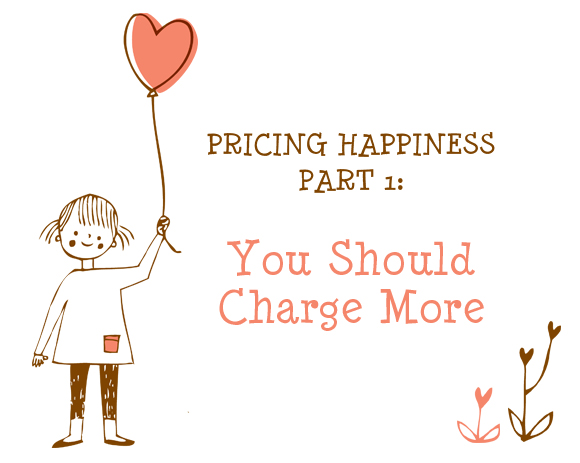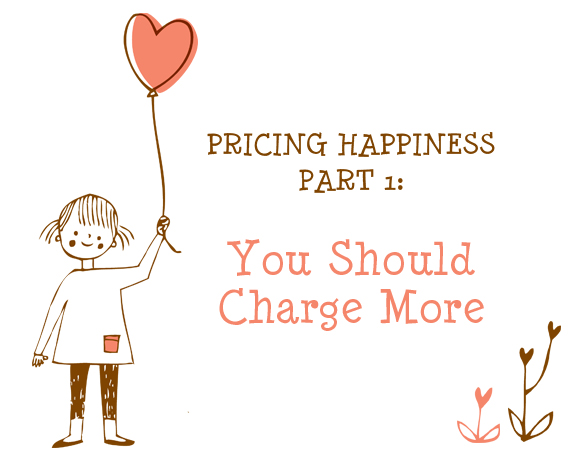

It can be so hard to set pricing for your work, whether you provide a service or sell products. You want to charge what seems “fair,” you want to position yourself correctly among your competitors, you want customers to continue to purchase from you, and of course you want to earn a living. I think that many small creative businesses are undervaluing their work, which I’m sure is not news to you. It’s funny, because if you’re like me, and call yourself “boss,” you’re in an enviable position where you can decide how much money you make – so why are we so hesitant to give ourselves a raise after years of dedicated work?
This information will apply best to you if you’ve been in the same line of work for a while, provide a very high quality service or product, and enjoy a steady stream of customers. If you’re just starting out or struggling to attract interest in your work, your efforts may be better focused on improving what you do and adjusting how you attract people who want to buy it. If you feel like you’re fairly successful right now, and would like to expand on that by positioning yourself as an expert in your field and being paid like one, I have got some ideas for you! And those of you just getting started, there will be some goodies in here for you, too. You will find that you have a hard time growing your business if you are undercharging from the start.
Why undercharging is harmful:
I’m sure you’ve heard this before, but as a refresher, here are some reasons why undercharging is an all-around terrible strategy for a small business:
![]() It makes your prospective customers undervalue your work. They assume you are not very good at what you do, are inexperienced, or are not in it for the long haul if you aren’t charging enough.
It makes your prospective customers undervalue your work. They assume you are not very good at what you do, are inexperienced, or are not in it for the long haul if you aren’t charging enough.
![]()
![]()
![]()
![]()
![]()
![]()
![]()
![]()
![]()
![]()
![]()
![]()
![]()
![]()
![]()
![]()
![]()
![]()
![]()
![]()
![]()
![]()
![]()
![]()
![]()
![]()
![]()
![]()
![]()
![]()
![]()
![]()
![]()
![]()
![]()
![]()
![]()
![]()
![]()
![]()
Why charging what you’re worth is vital:
![]()
![]()
![]()
![]()
![]()
![]()
![]()
![]()
![]()
![]()
![]()
![]()
![]()
![]()
![]()
![]()
![]()
![]()
![]()
![]()
![]()
![]()
![]()
![]()
![]()
![]()
![]()
![]()
![]()
![]()
![]()
![]()
![]()
![]()
![]()
![]()
![]()
![]()
![]()
![]()
Stay tuned for part 2! Next Monday, we will take this knowledge and apply it to your business! Be sure to let us know in the comments: How do you feel about your pricing? What are your worries? Have you ever struggled with pricing happiness?

